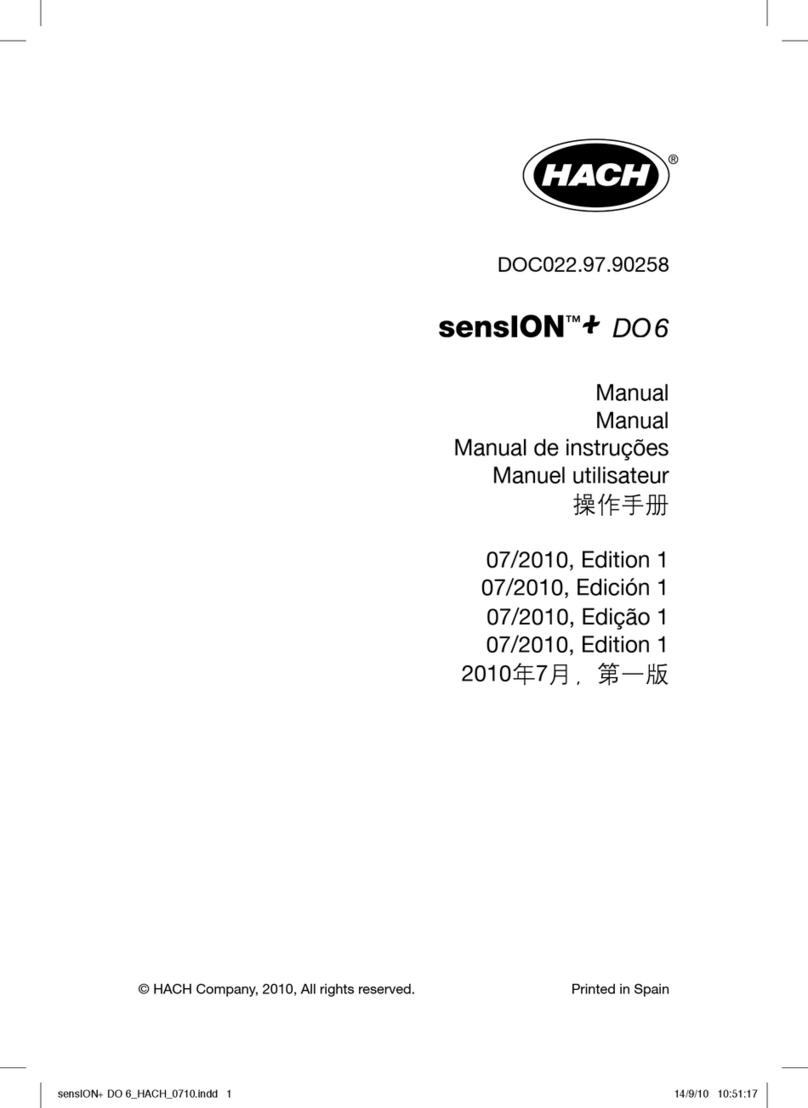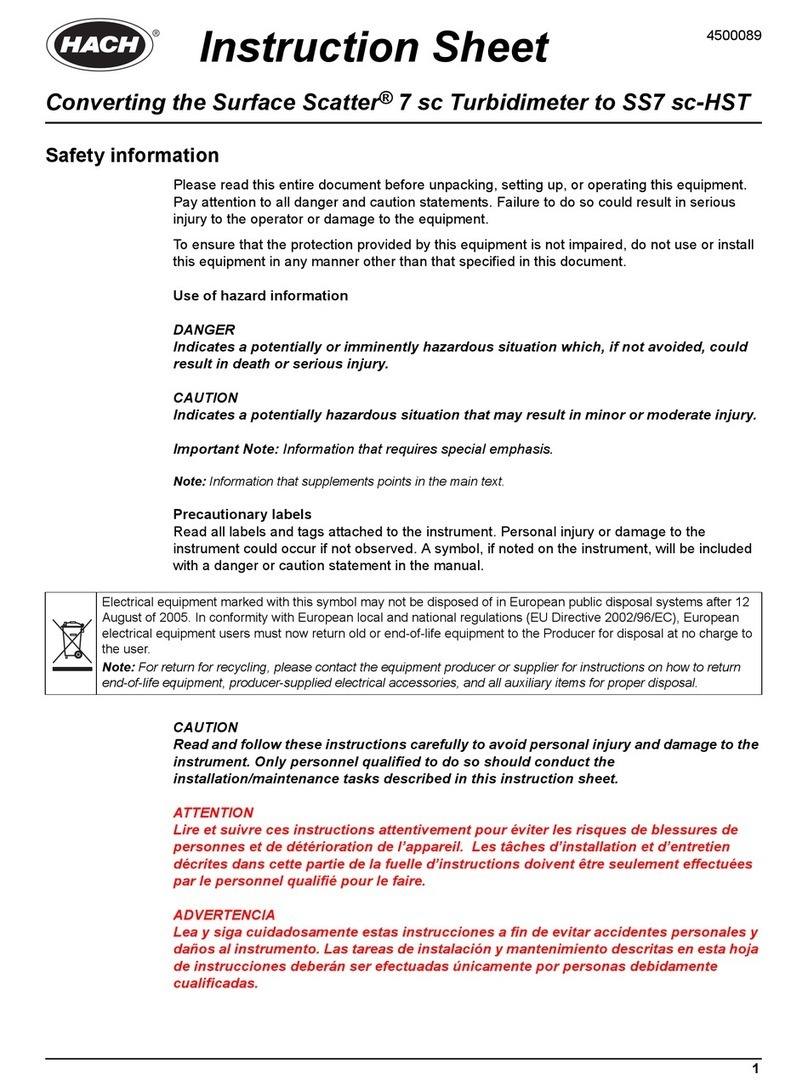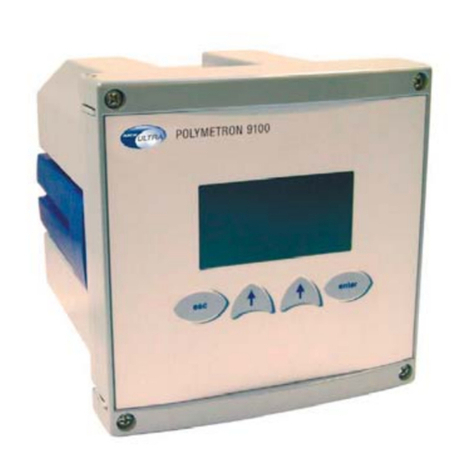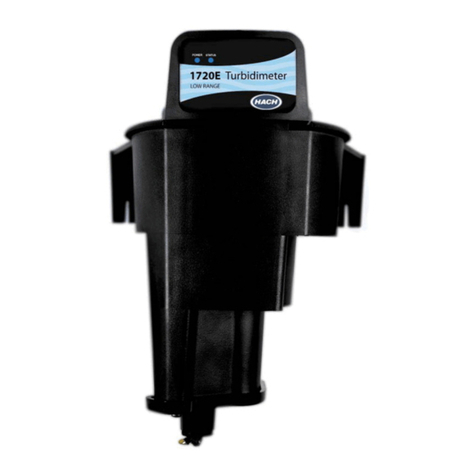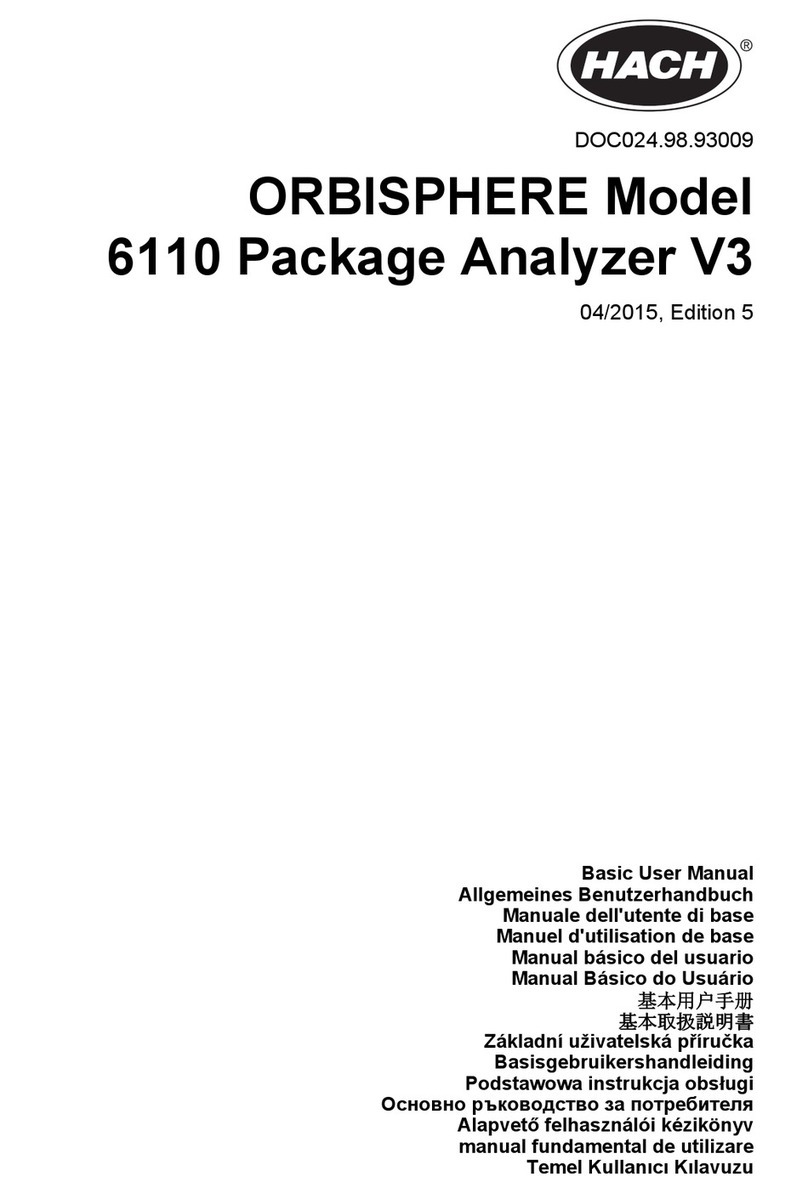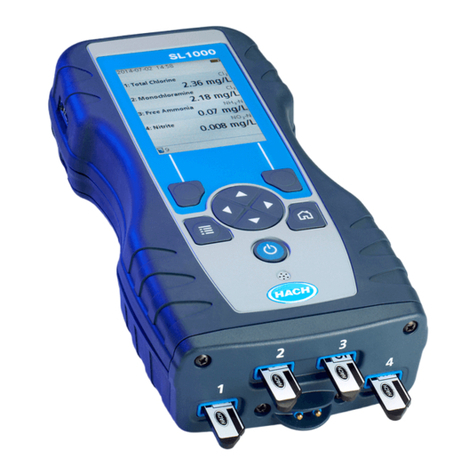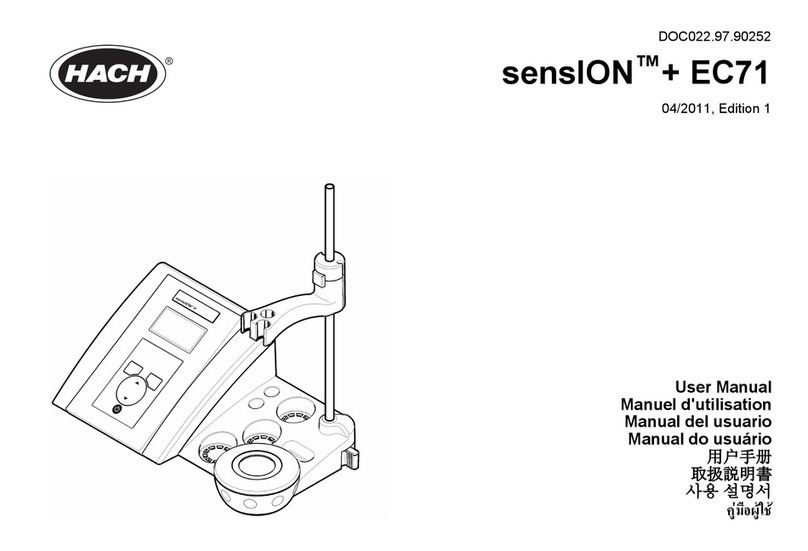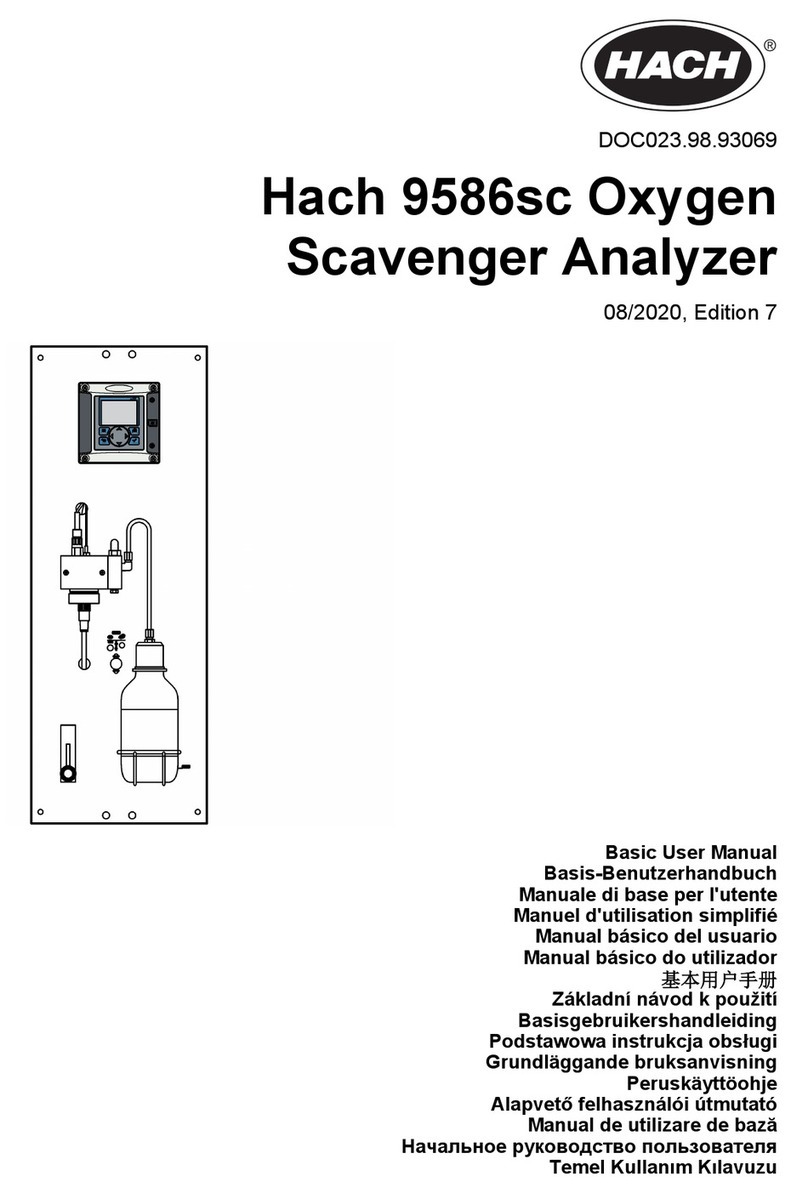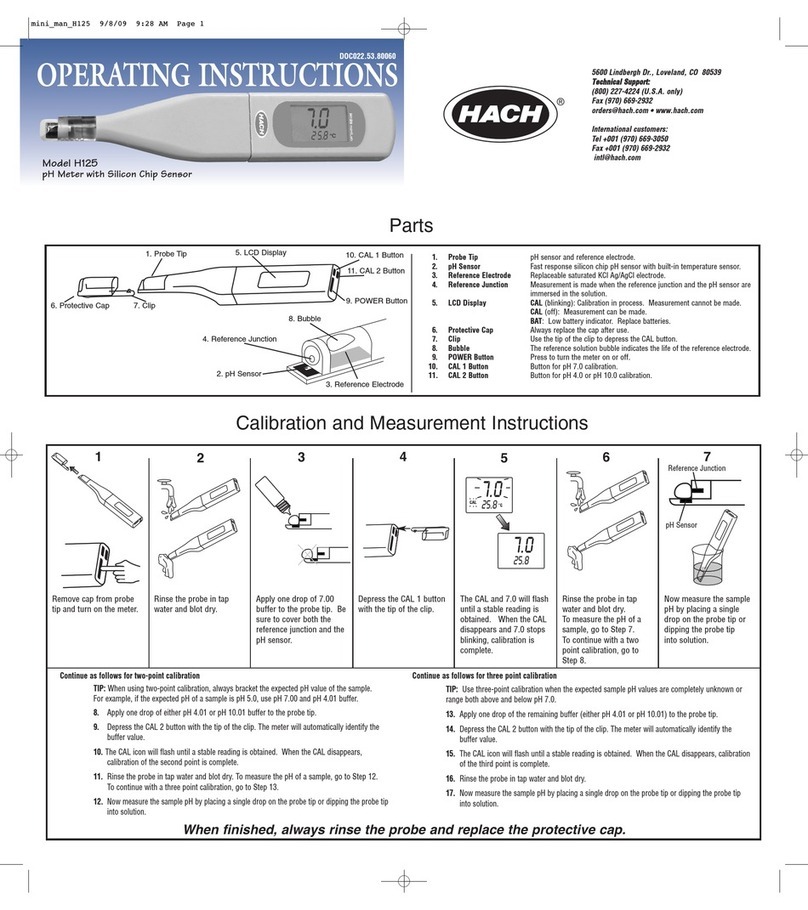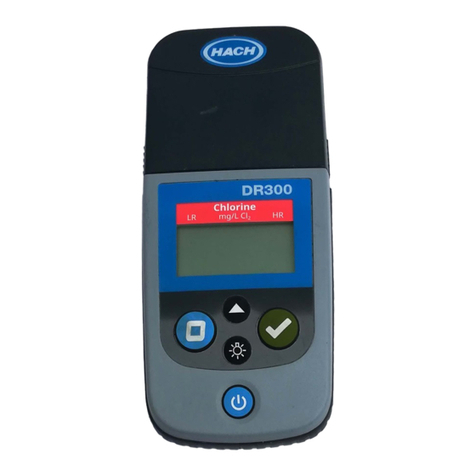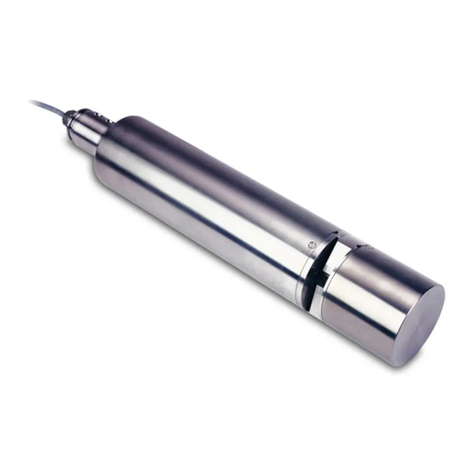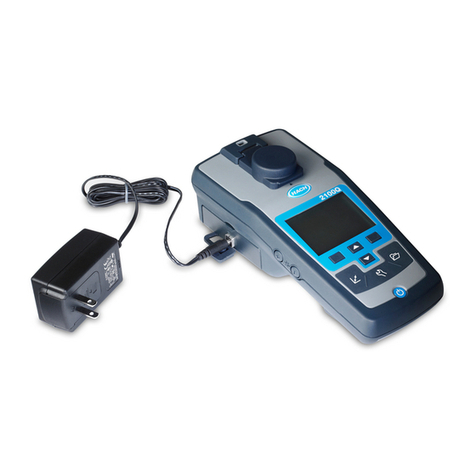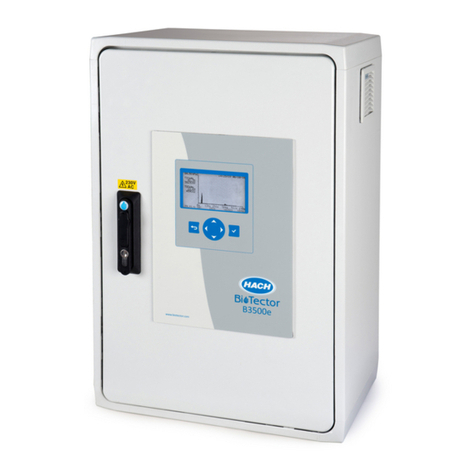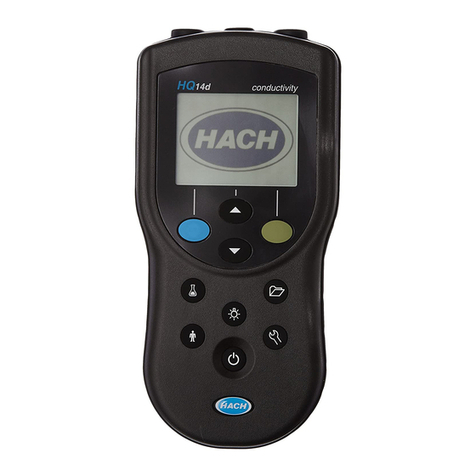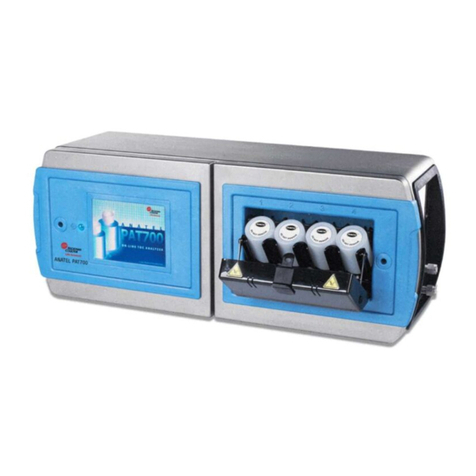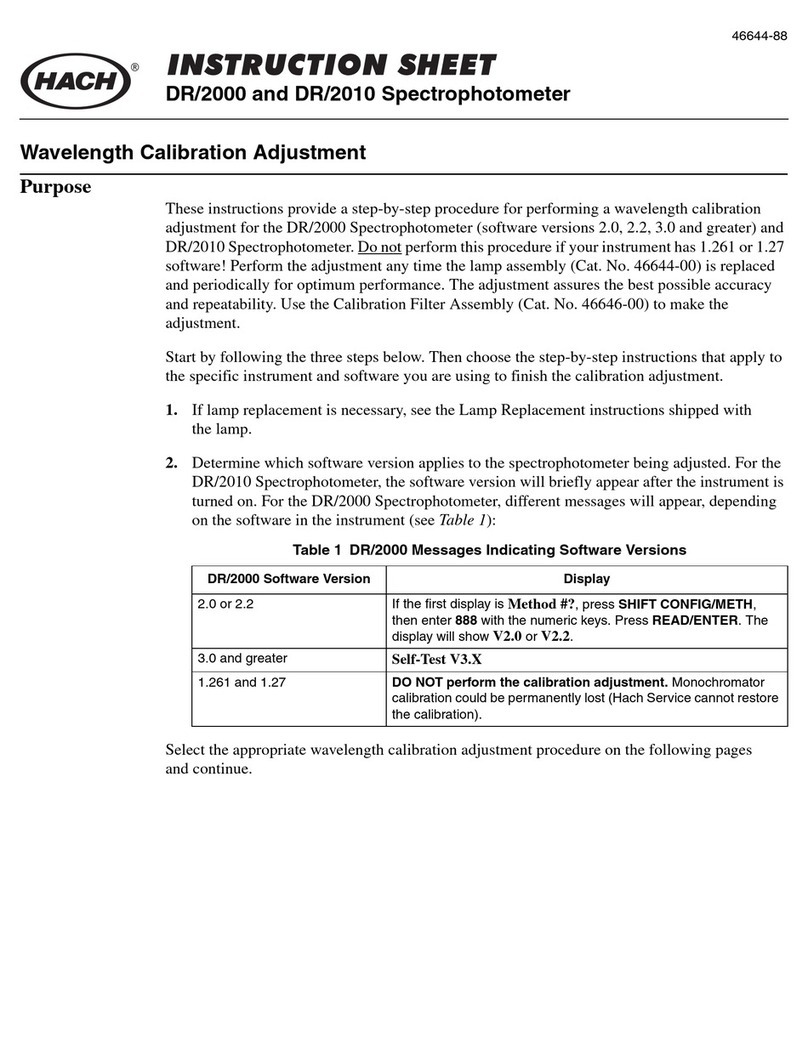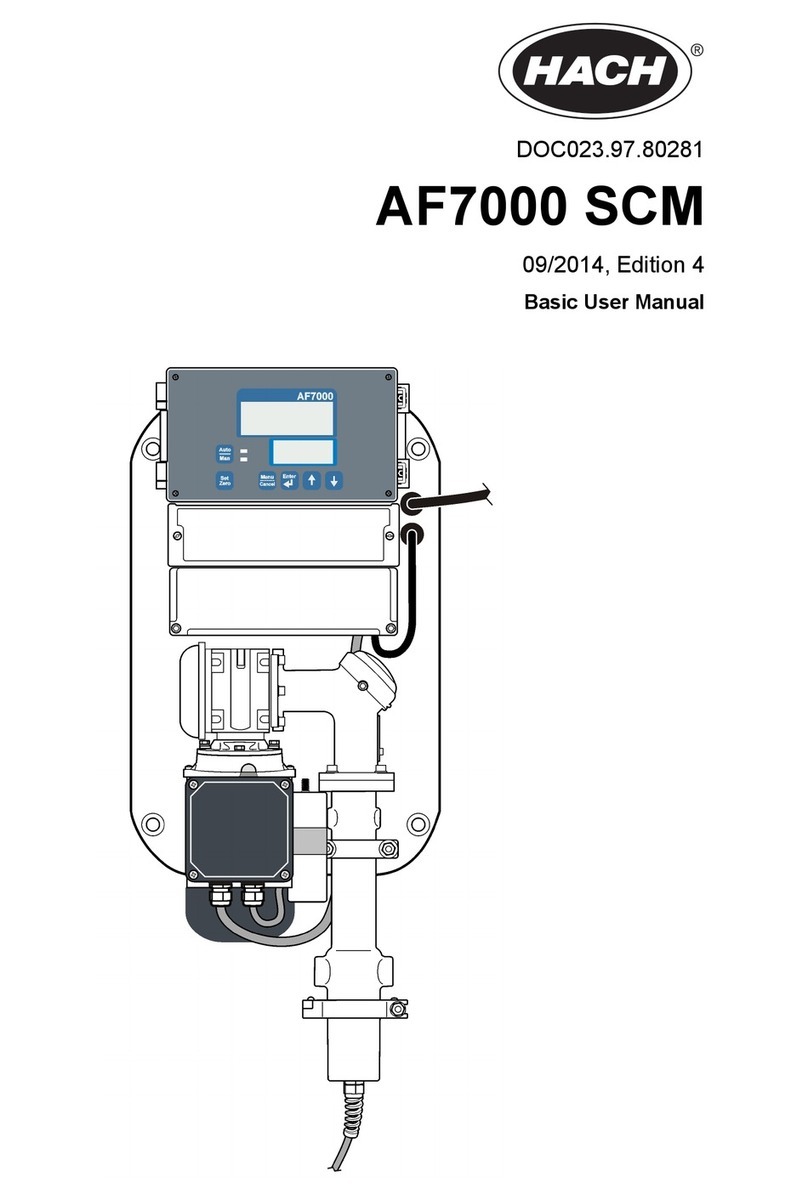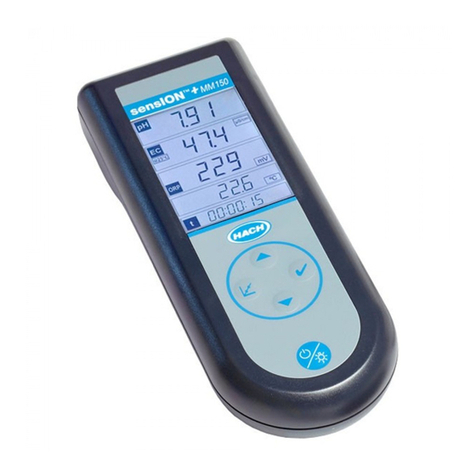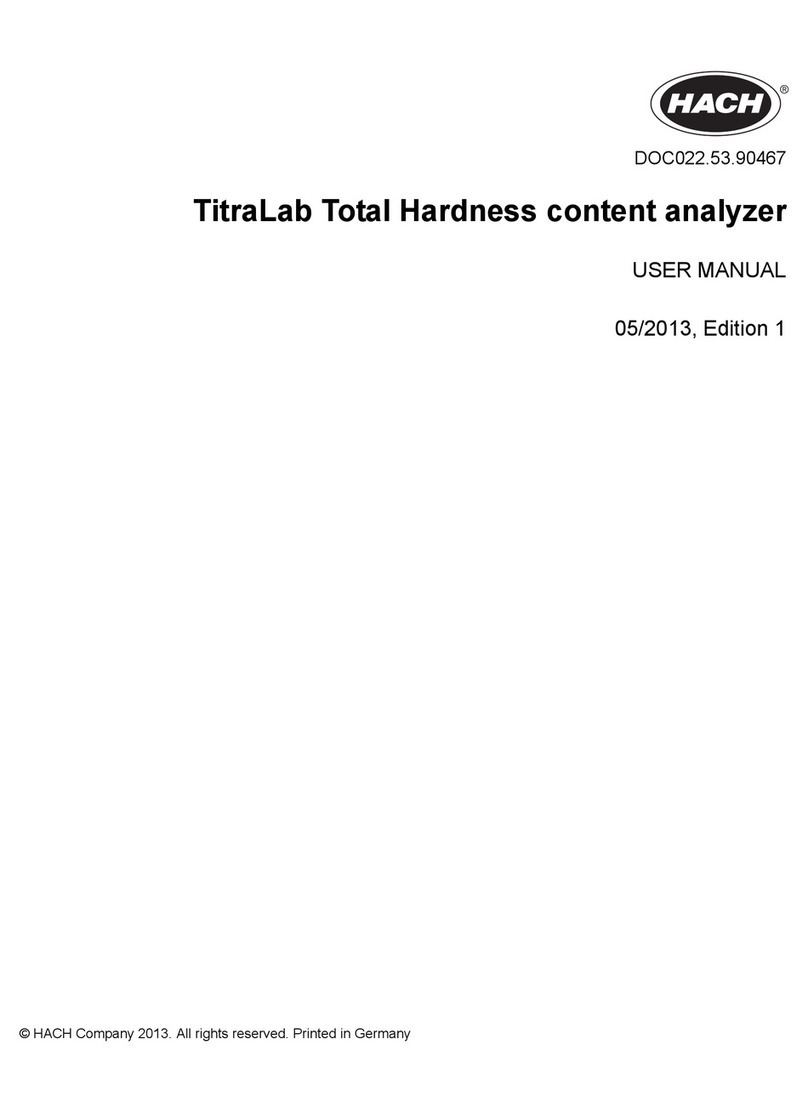
Calibrate
Items to collect: One auto-recognition calibration standard
1. Set the power to on.
2. Remove the cap from the sensor.
3. Push to go to calibration mode.
The auto-recognition standard(s) the tester expects to measure shows on the bottom line.
4. Rinse the sensor and cap with deionized water and blot dry.
5. Pour the calibration standard shown into the cap to the fill line.
6. Put the sensor fully into the cap.
7. When the measurement is stable, push to save the calibration and go to continuous measurement mode.
The measured value will flash 3 times and then stop. Then, "END" shows on the display.
8. Rinse the sensor and cap with deionized water and blot dry.
Measurement
Note: Air bubbles under the probe tip when submerged can cause slow stabilization or error in measurement. Shake the tester
from side to side to remove air bubbles.
1. Set the power to on.
2. Remove the cap from the sensor.
3. If the lock icon shows on the display, push to go to continuous measurement mode.
4. Rinse the sensor and cap with deionized water and blot dry.
5. Pour the water sample into the cap to the fill line.
6. Put the sensor fully into the cap. The measured value shows on the top line.
7. To keep the measured value on the display when the sensor is removed from the sample, push .
Note: The lock icon shows on the display when the measurement is stable.
8. To measure another sample, do steps 3–7.
9. When done with measurements:
a. Rinse the sensor and cap with deionized water.
b. Put the cap on the tester.
c. Set the power to off.
Advanced operation
Configure the settings
1. Push and hold until "SEt" shows on the display.
2. Push to scroll through the settings. The current value of the setting shows on the bottom line.
Option Description
Unit Select the temperature unit that shows on the display— C (Celsius) or F (Fahrenheit).
Unit Select the salinity unit that shows on the display— ppt or %.
AOFF Set the auto-off feature to On (enable, default) or Off (disabled). When set to On, power is automatically set to
off after 8 minutes of no activity.
rSEt Change the settings to the factory defaults—Yes or No (default). When set to Yes, changes the settings to the
factory settings and default values.
3. To change the value of the setting, push or .
4. When done with changes, push and hold until "End" shows to go to continuous measurement mode.
7
